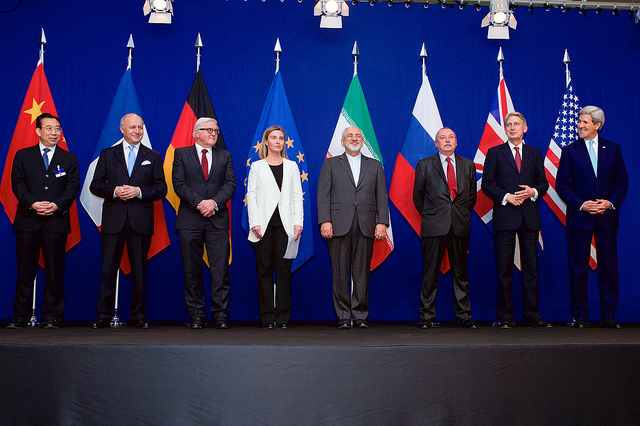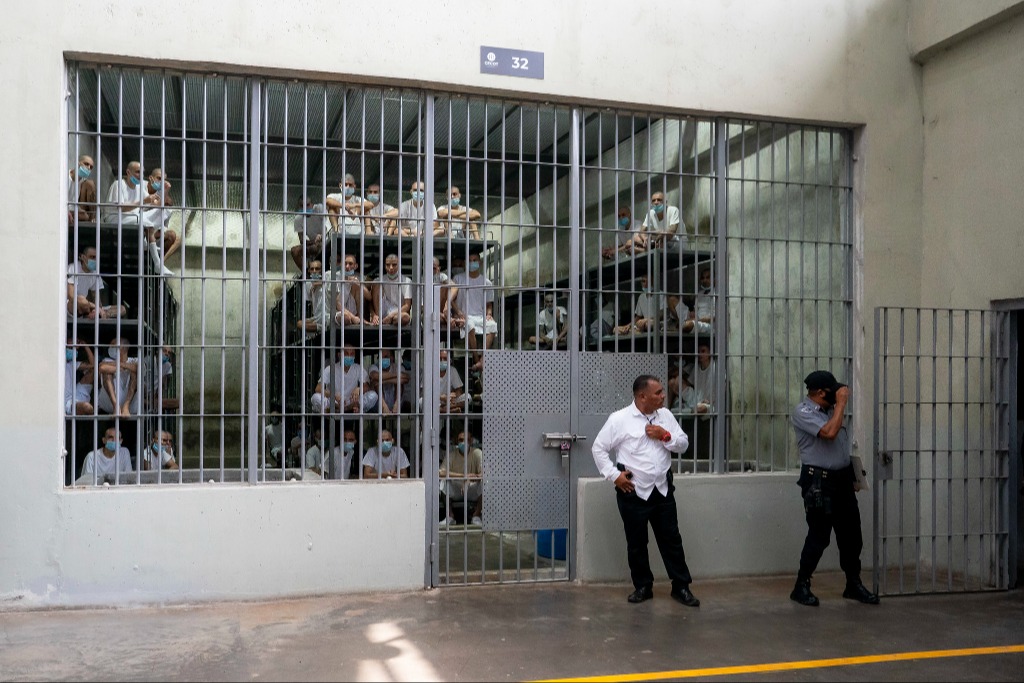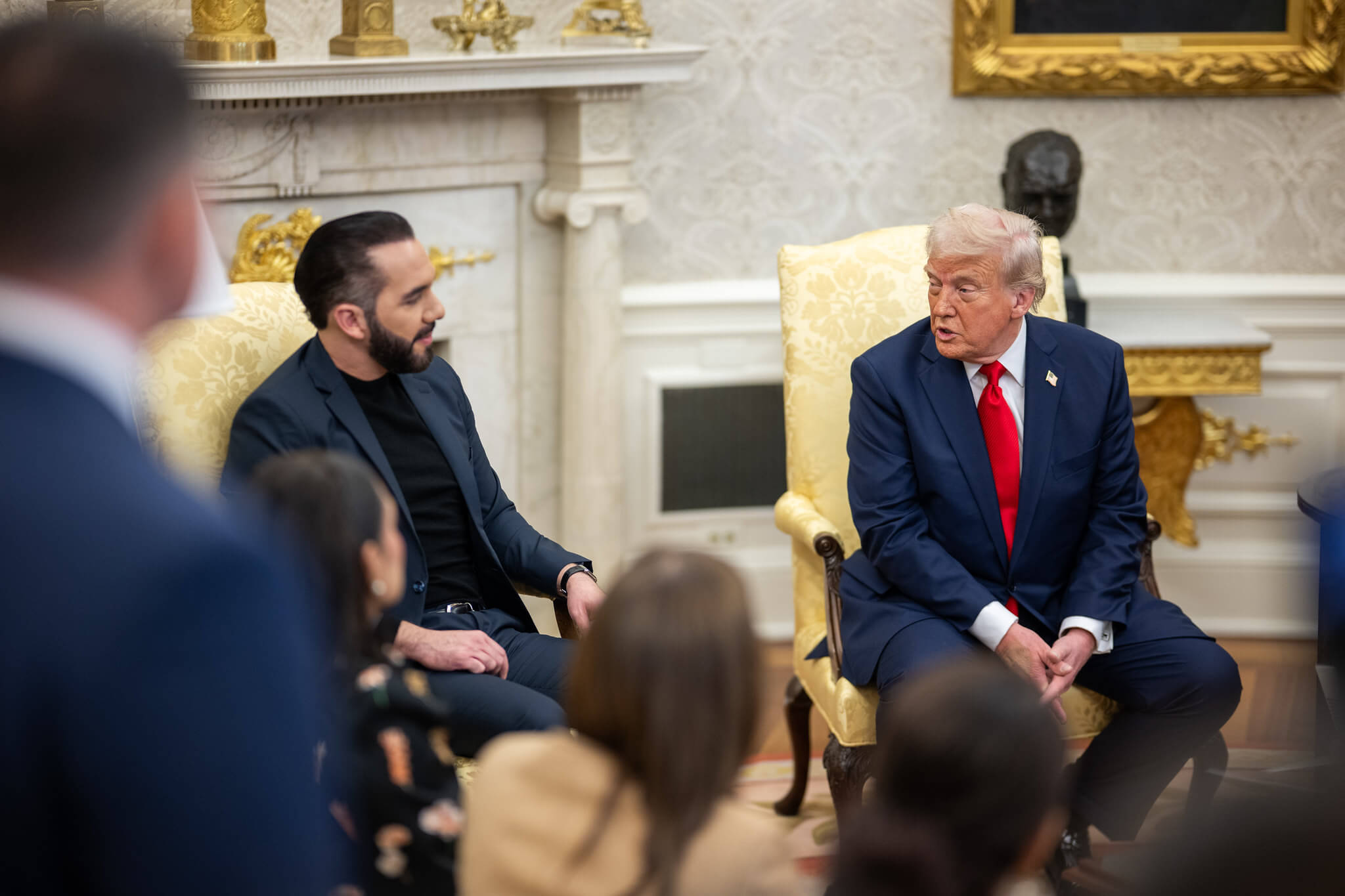So What the Heck is in the Iran Deal, Anyway? We Read it So You Don’t Have To.
There’s already a lot of commentary out there on the Iranian nuclear deal (officially termed the “Joint Comprehensive Plan of Action” or JCPOA), and there’s sure to be lots more coming in the next few days. But what does the deal actually do? You know, what’s in that very long and very dense document the parties have agreed to?

Published by The Lawfare Institute
in Cooperation With

There’s already a lot of commentary out there on the Iranian nuclear deal (officially termed the “Joint Comprehensive Plan of Action” or JCPOA), and there’s sure to be lots more coming in the next few days. But what does the deal actually do? You know, what’s in that very long and very dense document the parties have agreed to?
Iran and the P5+1 (US, France, Germany, UK, China, Russia and the EU) have been negotiating at breakneck speed, and understandably, making the text clear and user-friendly was not a top-priority for any of the negotiators. Much of it is unclear and duplicative, and a complicated web of intertextual references and citations makes for difficult reading.
Don’t worry though: We live to serve. Here’s a comprehensive summary.
Introductory Matters:
The document begins with a Preface, which is pretty much what you’d expect, containing very general language about the broad purposes of the JCOPA: to “ensure that Iran’s nuclear programme will be exclusively peaceful,” and to “produce the comprehensive lifting of all UN Security Council sanctions as well as multilateral and national sanctions related to Iran’s nuclear programme.”
It next moves on to a Preamble & General Provisions, which provides the principles that the rest of the agreement’s text will fill out: The deal will ensure the peaceful nature of the Iranian nuclear program and is to be endorsed by the UN Security Council. This UNSC resolution will provide for termination of all UN sanctions related to the the nuclear issue on “Implementation Day” (the day the IAEA certifies Iranian compliance with a subset of its obligations) and conclusion of UNSC consideration of the Iranian nuclear issue a little over ten years from now (on what the deal calls, with somewhat Schwarzeneggerian overtones, “Termination Day”).
Iran reaffirms it will never “seek, develop or acquire any nuclear weapons.” In turn, the P5+1 agree that all sanctions related to Iran’s nuclear program will be lifted and that they will refrain from imposing discriminatory regulatory and procedural requirements in their place. Although Iran is recognized as having all the standard NPT rights and obligations of a non-nuclear state, the agreement’s provisions stipulate that the JCPOA’s provision should not be viewed as precedent for interpreting international law, agreements or the NPT.
A “Joint Commission” consisting of eight members--US, UK, France, Germany, China, Russia, Iran and the EU--will be created to monitor implementation and resolve disputes. The P5+1 will also meet with Iran at the ministerial level every two years, or earlier if needed. Additionally, these same powers will cooperate with Iran “in the field of peaceful uses of nuclear energy” and “mutually determined civil nuclear cooperation projects.”
Iran's Obligations:
The next section, entitled “Nuclear”--together with Annex material that it references--provides the meat of Iran’s obligations under the deal.
With respect to “Enrichment, Enrichment R&D, Stockpiles” the section requires that there will be “certain agreed limitations” on uranium enrichment activities and R&D for eight years. Afterward, Iran’s enrichment will primarily be bound by voluntary commitments that will be submitted to IAEA as part of its (provisional) implementation of the Additional Protocol (this submission must occur prior to Implementation Day). For 15 years, all testing with uranium and uranium enrichment will occur exclusively in Natanz, and enrichment will only be up to 3.67 percent (enough for civilian use). Iran’s total stockpile of enriched uranium will remain under 300 kg of 3.67 percent, and the excess will be sold. The agreement also goes into extensive detail about how and where various sorts of equipment must be stored within Natanz.
For ten years, Iran’s (limited) enrichment program will continue exclusively with 5,060 active centrifuges, all of the simplest IR-1 model and all operating in Natanz. If any of these break, Iran may replace them with replacements of the same model. All excess and damaged centrifuges and equipment will be stored under continuous monitoring by the IAEA, also at Natanz. During these ten years, Iran can also continue research and development (R&D) enrichment with existing, more advanced centrifuges, but can only continue testing two of each model. For the bulk of these ten years, Iran will also be largely restricted from creating more centrifuges. After eight and a half years, these restrictions begin to lapse. The number of active advanced centrifuges jumps to thirty, and Iran can start producing more--to be kept incomplete and under IAEA monitoring for the remaining year and a half and eventually brought into operation “as needed.”
While all enrichment is taking place at Natanz, Fordow (a formerly secret facility revealed by Western intelligence in 2009) will be converted into a “nuclear, physics and technology centre.” International collaboration will be established for joint areas of research, and the Joint Commission will be told in advance of the projects that will be pursued there. The IAEA will designate the amount of uranium that can remain at the plant from past “enrichment operations,” and inspectors will have daily access to the plant for 15 years.
Similarly, for 15 years, no uranium enrichment will take place at Fordow and no nuclear material will be present. For the same period, only 1044 IR-1 centrifuges (in six cascades) will remain at Fordow. Two of these cascades will spin without uranium and will be transitioned to stable isotope production. The rest will remain idle. All other infrastructure, particularly connections and pipework that could allow these centrifuges to be used for enrichment of weapons-grade uranium, will be removed and stored under IAEA continuous monitoring at Natanz.
With respect to Arak, Heavy Water, and Fuel Reprocessing Iran commits to redesigning Arak as a modernised heavy water research reactor for industrial and medicinal research. A Working Group of the P5+1 will help with both the redesign and the implementation of the redesign (including technical & financial support, and facilitating the sale and transfer of necessary materials), although Iran will take the lead. The redesigned reactor will not produce weapons grade plutonium “in normal operation” and will minimize production of plutonium altogether. The design must be agreed on by the Joint Commission, and the IAEA will monitor construction.
The redesigned reactor will use specified measurements of uranium, and the fuel design will need to be reviewed and approved by the Joint Commission. Certain existing materials, such as natural uranium pellets and IR-40 fuel assemblies, will be placed under continuous monitoring until they can be converted. All spent fuel, for the lifetime of the reactor, will be shipped out of country. The reactor will operate under IAEA monitoring.
For 15 years, other than Arak, there will be no additional heavy water reactors or accumulation of heavy water, and all excess heavy water (as defined explicitly in the deal) will be made available for export. Iran will report on this to the IAEA, which will have access in order to verify. For the same period, Iran will not acquire do any reprocessing or related activities (except for a very specific few). According to the deal, Iran also “does not intend to thereafter” do so either. The force of this language is unclear; it also seems less strict the Lausanne language that “Iran has committed indefinitely to not conduct reprocessing or reprocessing research and development on spent nuclear fuel.”
The next section lays out a series of Transparency and Confidence Building Measures. Over the next few months, Iran will provisionally apply the Additional Protocol (allowing for increased inspections), and fully implement both modified code 3.1 (obligating Iran to disclose new nuclear facilities before construction starts) and the “Roadmap for Clarification of Past and Present Outstanding Issues.” The IAEA will have to verify that these (as well as other measures) have been completed in order to trigger “Implementation Day.”
In the time frames specified (starting on Adoption Day and continuing for various periods of between 8 year and 25 years), Iran will allow the IAEA to both monitor the implementation of the voluntary measures and to implement transparency measures that include:
-
a long-term IAEA presence in Iran;
-
IAEA monitoring of uranium ore concentrate;
-
containment and surveillance of centrifuge rotors and bellows; and
-
a reliable mechanism to ensure speedy resolution of IAEA access concerns.
Iran will also “seek” to obtain parliamentary ratification and thus formally conclude the Additional Protocol. (This last action will either occur by, or beginning on, Transition Day. The language is unclear).
For an unspecified duration of time, Iran also agrees not to engage in activities, including at the research and design level, that could contribute to the development of a nuclear explosive device. Such activities include developing or using explosively driven neutron sources, or computer models to simulate nuclear explosive devices. Iran also agrees to cooperate with and act in accordance with the procurement channel specified in the JCPOA (i.e. under the oversight and approval of the Joint Commission) when obtaining certain sensitive nuclear-related material.
What Iran Gets:
Those are Iran’s obligations under the agreement. Here’s what Iran gets in return. The main benefits involve Sanctions relief. On Implementation Day (i.e. simultaneously with IAEA-verification that Iran has met certain preliminary obligations), the UN Security Council will “lift” all sanctions related to the Iranian nuclear issue (imposed from from 2006-2015). Similarly, the EU will terminate all of its economic and financial sanctions, and US sanctions waivers and suspensions will take effect. This wave of relief will include suspension of sanctions related to:
-
financial banking and transactions with Iranian institutions,
-
bilateral trade,
-
the import and transport of Iranian oil,
-
investments,
-
sale of aircraft,
-
importation of goods, and
-
sanctions on specific individuals and entities.
After eight years (or when the IAEA reaches the Broader Conclusion, whichever is earlier), the EU will terminate all proliferation-related sanctions and the US. will terminate or modify sanctions preventing Iran’s acquiring nuclear-related commodities and services (translation: ballistic missiles). At this time, the US’s approach to Iran’s nuclear activities must be consistent with the U.S. approach to other non-nuclear-weapon states. The United States must also make every effort to encourage officials at the state or local level to take into account the changes in the U.S. policy and to lift their own sanctions regimes.
Both the United States and the EU will refrain from re-introducing or re-imposing the sanctions that they terminated as a result of the JCPOA. There will also be no new nuclear-related UN Security Council sanctions and no new EU or U.S. sanctions. Presumably, the US and EU could still impose new (even identical) sanctions on Iranian individuals or institutions for reasons unrelated to the nuclear program (e.g. an upsurge in Iranian support for terrorism).
Crucially, however, the agreement also recognizes that “Iran has stated that it will treat such a re-introduction or re-imposition of the sanctions… as grounds to cease performing its commitments under this JCPOA in whole or in part.” This seems to acknowledge that as long as Iran complies with the deal, the US and EU will likely be very hesitant to impose new sanctions irrespective of other behavior.
The EU, EU Member States, and US will also issue clear public guidance about the sanctions relief, and will refrain from any policy intended to adversely affect the normalization of trade and economic relations with Iran. They commit to engaging in joint projects with Iran, including through IAEA cooperation projects, in the field of peaceful nuclear technology. These joint projects include: nuclear power plants, research reactors, fuel fabrication, agreed joint advanced R&D such as fusion, establishment of a regional nuclear medical center, personnel training, nuclear safety and security, and environmental protection. Iran and these countries will also agree on steps to ensure Iran’s access in areas of trade, technology, finance and energy.
A Timeline:
The deal then lays out an Implementation Plan which lists the five “milestones” for implementation of JCPOA commitments:
- Finalization Day: The day the agreement is reached, and is endorsed by Iran and the P5+1: July 14, 2015. The deal is submitted to the UNSC and the EU Council, and Iran and the IAEA begin working on transparency arrangements. Participants in the agreement will “make necessary arrangements and preparations” to implement their commitments on “Adoption Day,”
- Adoption Day: 90 days after the UNSC votes to endorse the JCPOA, passing resolutions that will, on Implementation Day, lift all nuclear-related sanctions on Iran. (Adoption Day can also come earlier by mutual agreement of the parties.) Iran provisionally applies the Additional Protocol (allowing for increased inspections), fully implements modified code 3.1 (obligating Iran to disclose new nuclear facilities before construction starts), and provides certain information in writing to the IAEA about “outstanding issues.” The EU and US President will pass those regulations and issue those waivers necessary to begin sanction relief on Implementation Day. Iran and the P5+1 begin discussions on a document defining their respective roles in the transition of the Arak Heavy Water Reactor.
- Implementation Day: The day the IAEA certifies that Iran has conformed to a specified, significant subset of its obligations--e.g. implementing changes at Arak, capping enrichment capacity, provisionally implementing the Additional Protocol etc. Simultaneous with the IAEA certification, previously issued EU regulations, UN Security Council resolution, and US presidential waivers will take effect, providing Iran with sweeping sanctions relief. Sanctions that expire on Implementation Day include: restrictions on banking, transfers, loans, insurance, US currency, trade, oil, gas, transport, shipping and metals designated individuals and companies, and automobiles.
- Transition Day: Either 8 years after Adoption Day, or when the IAEA and UNSC reach the “Broader Conclusion” that Iran’s nuclear program is entirely peaceful (whichever is first). Iran will “seek” parliamentary ratification and thereby formally “conclude” the Additional Protocol. The US will “seek” legislative action to lift remaining sanctions, particularly “sanctions under the Iran, North Korea and Syria Nonproliferation Act on the acquisition of nuclear-related commodities and services for nuclear activities contemplated in the JCPOA.” The EU will also lift further sanctions, in particular “proliferation-sensitive nuclear activities”--i.e. sanctions related to ballistic missiles.
- Termination Day: 10 years from Adoption Day. The UN Security Resolution endorsing the JCPOA will terminate. The EU will terminate all remaining sanctions.
Resolving Disputes:
The agreement also contains a Dispute Resolution Mechanism. Under the mechanism, both Iran and any member of the P5+1 can refer complaints over the other side’s not meeting its JCPOA commitments to the Joint Commission. The Joint Commission would have 15 days to resolve the issue unless “the time period was extended by consensus.” If the Joint Commission fails to resolve the issue, the issue could be referred to “Ministers of Foreign Affairs,” who would also have 15 days to resolves. Either alternatively to, or simultaneously with, the Ministers of Foreign Affairs stage, the issue could also be referred to an Advisory Board consisting of three members, one appointed by each party in the dispute and one appointed by an independent party. The Board would also have 15 days to review the dispute. If the dispute remains unresolved, the Joint Commission will have five days to review the opinion of the Board and attempt to resolve the issue.
If the issue is still unresolved after this process, the party bringing the complaint can cease performing its commitments under the JCPOA or notify the UN Security Council that the other party is involved in “significant non-performance.” The UN Security Council would then have 30 days to vote on whether to continue lifting sanctions. Unless it adopts a resolution to continue sanctions relief, “the provisions of the old UN Security Council Resolutions [initially lifted on Implementation Day] would be re-imposed.” The Security Council will “take into account” the views of the states involved in the dispute and of the Advisory Board.
(There seems to be some inartful language here, implying that the UNSC might both fail to pass a resolution on continuing sanctions lifting and prevent sanctions to be reinstated: “If the resolution described above [continuing sanctions suspensions] has not been adopted within 30 days of the notification, then the provisions of the old UN Security Council resolutions would be re-imposed, unless the UN Security Council decides otherwise.” This last clause is either duplicative or is referencing some other unforeseen action.)
Finally, the text once again acknowledges (ominously) that “Iran has stated that if sanctions are reinstated in whole or in part, Iran will treat that as grounds to cease performing its commitments under this JCPOA in whole or in part.”
The Annexes:
After the main text, the agreement contains a number of annexes, which expand upon the components of the main text. ANNEX I: NUCLEAR RELATED MEASURES offers a myriad of technical details about limitations on Iran’s nuclear activities, storage of its equipment and IAEA inspections. It provides details about the development and storage of centrifuges, the conversion of reactors, limits on enrichment and more (we have included much of this information above). It also details Iran’s responsibilities to begin implementing the Additional Protocol, Modified Code 3.1, and the “Roadmap for Clarification of Past and Present Outstanding Issues.”
Some of the annex’s most crucial sections concern the IAEA’s presence and capabilities within Iran. “For 15 years or longer,” Iran will allow the IAEA to use “modern technologies” such as “on-line enrichment measurement” and will allow the installation of automatic measurement devices that will update IAEA inspectors on nuclear sites. Iran will also facilitate a “long-term IAEA presence” through the provision of visas and work-space. Within nine months of Implementation Day, Iran will increase the total number of IAEA inspectors allowed within Iran to between 130 and 150. For 25 years, Iran also guarantees the IAEA the ability to monitor and verify the use of uranium ore. For 15 years; it guarantees the IAEA “continuous monitoring” of stored materials in Natanz. For 20 years, Iran will take specified, necessary steps “for containment and surveillance on centrifuge rotor tubes and bellows” that Iran is keeping its agreement to limit uranium isotope separation-related research and activity to specified methods for 10 years.
The annex also specifies the process by which the IAEA deals with questions and suspicions: If the IAEA becomes concerned regarding “undeclared nuclear materials or activities… or activities inconsistent with the JCPOA,” the Agency must notify Iran of its concerns, at which point Iran will have the opportunity to offer an explanation. If the IAEA isn’t satisfied, it can request access to the sites in question and list the reasons for access “in writing,” though Iran may propose alternate means of resolving the problem. If the sides are not able to reach agreement over access within 14 days of the IAEA’s original request, Iran will consult the Joint Commission to resolve the issue. The Joint Commission will have seven days to reach a conclusion, which Iran will then have three days to implement.
Note that the Joint Commission can “advise on the necessary means” to resolve the dispute either by consensus, or by a vote of 5 out of 8 members—which means that the Commission would be able to reach a conclusion even if Russia, China, and Iran dissent. The annex also specifies that IAEA requests for access must be made “in good faith, with due observance of the sovereign rights of Iran,” “kept to the minimum necessary,” and “will not be aimed at interfering with Iranian military or other national security activities.”
A final section bars Iran from participating in activities that could “contribute” to the construction of a nuclear bomb: developing or using computer models to “simulate” nuclear weapons, developing “multi-point explosive detonation systems” unless approved by the Joint Commission, developing “explosive diagnostic systems” or “explosively driven neutron sources.” These prohibitions are of unspecified duration.
Lastly, the annex includes an extensive “conceptual design” for the redesign and reconstruction of Arak as a “modernised heavy water research reactor.” This outline will provide the basis for the redesign that will be approved by the Joint Commission and implemented by Iran.
ANNEX II: SANCTIONS-RELATED COMMITMENTS provides a comprehensive list of US, EU, and UN sanctions that will be lifted by the deal. Most of this material is included in our summary of the “Sanctions” section above. Included as well is a set of “attachments” listing individuals who will be undesignated at various stages.
ANNEX III: CIVIL NUCLEAR COOPERATION describes cooperation between Iran and the P5+1, which can take place by mutual determination between the parties. Bilateral or multilateral agreements that do not include all members of the P5+1 are permitted as long as they are consistent with the JCPOA.
Parties of the P5+1 will “develop nuclear cooperation” with Iran in constructing and supplying nuclear technology, facilities, and fuel, particularly as regards the Arak Modernisation Project and Iran’s acquisition of light-water research and power reactors. Iran and the P5+1 will also seek “scientific exchange” on nuclear research and cooperate in developing and implementing procedures in nuclear safety and nuclear security. This section also dictates that the P5+1 will work with Iran on the “effective and efficient implementation of IAEA safeguards and transparency measures.” Interestingly, most of the language in this section makes fairly clear that these projects are largely optional: “[The P5+1] parties, as appropriate, are prepared to cooperate with Iran.”
ANNEX IV: JOINT COMMISSION describes the standing body made of representatives of the P5+1, Iran, and the High Representative of the Union for Foreign Affairs and Security Policy (an EU position). This last representative (or her designee) is the Coordinator of the Commission, who appears to take a somewhat administrative role (although she does not participate in decisions activities related to transfer of nuclear material outside Iran). The Commission will meet on a quarterly basis and at any time upon request of a member. Decisions are to be made by consensus except stated otherwise (as is the case if the IAEA and Iran bring a dispute to the Joint Commission over unreported nuclear sites), and each representative has one vote.
The Commission’s remit is broad, including review, approval, and consultation of numerous aspects of the Iranian nuclear program, and resolution of disputes. The Commission is also responsible for establishing two Working Groups, one on procurement (i.e., sale of nuclear materials to and from Iran) and one on sanctions relief.
ANNEX V: IMPLEMENTATION PLAN offers an overview of what parts of the agreement will be implemented at the various stages. Most of the information from this section has been incorporated into our summary of the “Implementation Plan” section above.
Got all that? There will be a short quiz next period.







